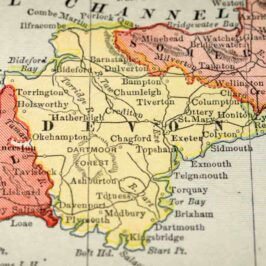Welcome to the world of mead, the ancient drink that’s making a modern comeback in Britain.
Mead, often called the “drink of the gods,” is a beverage steeped in myth and tradition. Known as one of the oldest alcoholic drinks in human history, mead is made by fermenting honey with water. While it may have ancient roots, this unique beverage is experiencing a modern resurgence in Britain, with more people discovering its rich flavours and diverse styles.
So, what exactly is mead, why is it gaining popularity again, and why should you consider trying it?
Mead, often called honey wine, is an alcoholic beverage created by fermenting honey with water. Sometimes fruits, spices, or grains are added to create unique flavours. But at its core, mead is all about the honey. The quality and flavour of the honey used play a significant role in determining the final taste of the mead, making each bottle a reflection of the local environment where the bees collected their nectar.
A Sip Through Time: The Rich History of British Mead
Mead’s story in Britain is as old as the hills. Archaeological evidence suggests that mead was being produced in Britain as far back as 2000 BCE. That’s right people were enjoying mead on these isles before Stonehenge was even completed!
In medieval times, mead was the drink of choice for many Britons. It featured prominently in AngloSaxon and Celtic cultures, often associated with celebrations and rituals. The term “honeymoon” is believed to originate from the tradition of newlyweds drinking mead for a month (a moon cycle) after their wedding.
But why did mead fall out of favor? The rise of beer in the Middle Ages and the increasing availability of cheap sugar in the 17th and 18th centuries led to a decline in mead production. For centuries, mead became a niche product, often viewed as a novelty or historical curiosity.
The Sweet Comeback: Modern British Mead Production
Fast forward to today, and British mead is experiencing a renaissance. In 2018, the UK mead market was valued at £8.5 million, and it’s projected to reach £11.5 million by 2025. That’s a lot of honey!
The British mead industry is experiencing a notable growth spurt. According to the UK Mead Alliance, there are now over 30 meaderies across the country, a significant increase from just a handful a decade ago. The demand for mead has been steadily increasing, with a 25% rise in sales reported in 2022 alone.
Currently, there are over 30 commercial meaderies in the UK, ranging from small artisanal producers to larger operations. In 2019, British meaderies produced approximately 750,000 liters of mead. While this might seem small compared to the 4.5 billion liters of beer produced annually in the UK, it represents significant growth for the mead industry.
This growing interest is fueled by a combination of factors — a shift towards craft beverages, a desire for natural ingredients, and the resurgence of interest in traditional and historical drinks. The global mead market is expected to reach $1.3 billion by 2028, reflecting a compound annual growth rate (CAGR) of 13% from 2021 to 2028.
Mead in Popular Culture: From Game of Thrones to Your Local Pub
Mead has seen a boost in popularity thanks to its prominence in shows like Game of Thrones and Vikings. This media exposure has piqued curiosity about this ancient drink.
In response, some British pubs have started offering mead. The Wetherspoon chain, for instance, introduced mead to its drinks menu in 2018, bringing this historic beverage to a wider audience.
Sustainability and Mead: A Sweet Solution?
With growing concerns about climate change and biodiversity loss, mead production offers some environmental benefits. Beekeeping, essential for mead production, supports pollinator populations. Some British meaderies are going a step further, adopting sustainable practices like using recycled packaging and investing in renewable energy.
How to Enjoy British Mead: Tips from the Experts
Ready to try some mead? Here are some tips from British meadmakers:
Serve chilled: Most meads are best enjoyed cool, around 1214°C.
Use the right glass: A white wine glass works well for most meads.
Pair wisely: Try mead with strong cheeses, fruit desserts, or even spicy foods.
Start with a variety: Try a flight of different meads to discover your preference.
The Future is Mead-ieval
From ancient feasting halls to modern cocktail bars, mead has had quite a journey in Britain. Its recent resurgence is a testament to both its rich history and its modern appeal. Whether you’re a history buff, a culinary adventurer, or simply looking for a new drink to try, British mead offers something unique.
So next time you’re browsing the drinks menu or wandering through a farmer’s market, keep an eye out for some locally produced mead. You might just discover your new favorite drink one that connects you to thousands of years of British history in every sweet, golden sip.
Remember, in the world of British beverages, mead is creating quite a buzz. Why not bee part of it?







